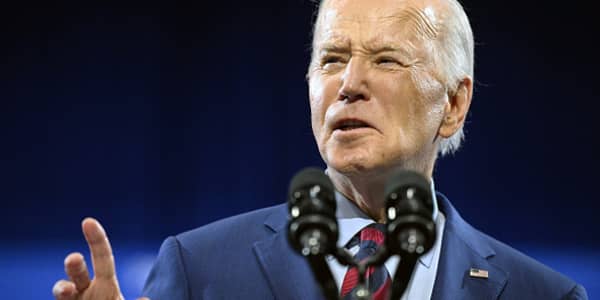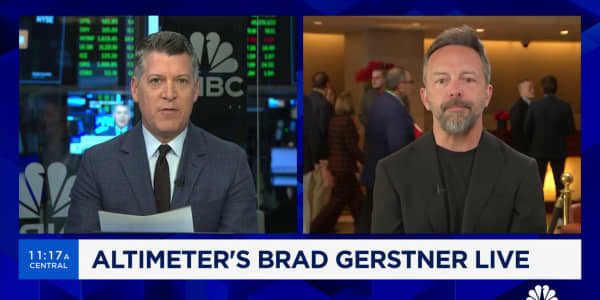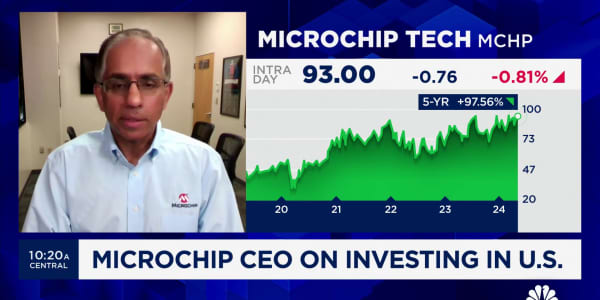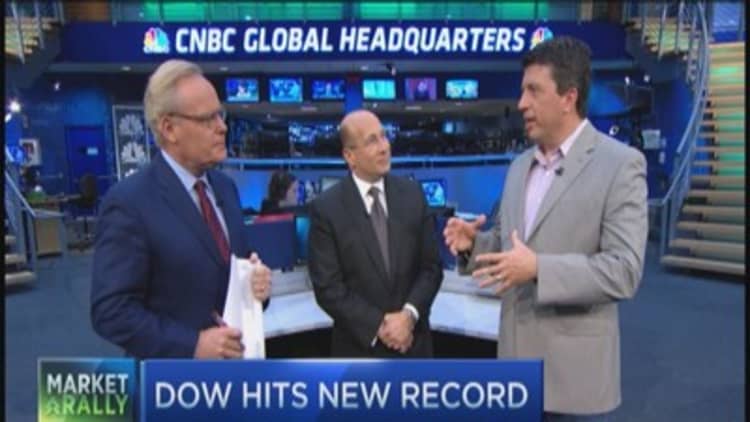
Friday's stock surge provides yet another reminder that when it comes to moving the market, there's nothing like a little old-fashioned money printing.
What waits on the other side—asset bubbles, inflation, the prospects for still greater wealth disparity—remains, of course, an issue for another day.
The important thing is that the market wants what the market wants, and the Bank of Japan appears only too happy to comply, announcing a fairly aggressive stimulus package Friday that traders cheered by pushing the major averages back near record territory. The announcement came just two days after the Federal Reserve—the BOJ's U.S. counterpart—said it was ending a quantitative easing program that saw its balance sheet swell by nearly $4 trillion since its inception.
"So much for the end of QE! The Bank of Japan's announcement today that it is stepping up its asset purchases is a timely reminder that not everyone has to follow the Fed," Julian Jessop, chief global economist at Capital Economics, said in a morning note to clients. "Further QE in Japan should help to support equity prices worldwide and especially in the euro zone if expectations build that the (European Central Bank) will follow with full-blown QE of its own."
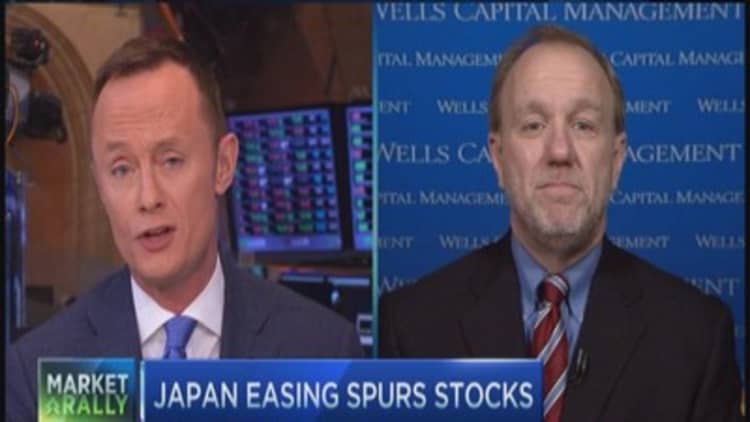
Indeed, Wall Street is rubbing its hands together contemplating that at a time when global growth appears to be slowing, the willingness of central banks to crank up their virtual printing presses hasn't abated a bit, the Fed notwithstanding.
Read MoreGlobal markets cheer Japan's double whammy
Of course there are words of caution: Jessop warned investors not to go "overboard" in their enthusiasm over the BOJ's move. At current exchange rates, the action amounts to just more than a quarter of the $85 billion a month the Fed was adding when it it began the third leg of its QE program.
Even Europe may not deliver the goods to the extent the market hopes.
Morgan Stanley economist Elga Bartsch put just a 40 percent chance on the ECB going full QE on the markets. Bartsch noted the "negative long-term side-effects of QE on the financial system."
"We believe that the ECB needs to calibrate the announcement of additional measures carefully against the execution of already announced measures to avoid giving the impression of panicking in the light of soft economic indicators and record-low inflation," Bartsch said in a report for clients. "In addition, piling announcement on top of announcement runs the risk of undermining the effectiveness of existing measures, we think."
Read MoreThese are the biggest winners in the October rally
She added: "We would highlight that broad-based asset purchases could be counterproductive to the health of the financial sector. This is because after the initial relief rally, historically they have caused lower returns on a variety of assets, notably government bonds, over the longer run."
The communication issue is important and another potential risk. Investors and the Fed are on different pages in terms of interest rate expectations, with the central bank's projections considerably higher than what the market is pricing in.
Read MoreWhy the market is losing its faith in the Fed
Worrywarts, though, have been shunted into the shadows in the way they almost always are when the market is ripping higher.
Peak Theories Research founder Abigail Doolittle on Friday expressed the frustrations of those worried about unbridled easing.
"Are the central banks going to blow up the world in an effort to save it?" she said in an analysis. "The charts that would keep me up at night if I worked at the Federal Reserve are not those of the equity or commodity markets but of the currency markets. ... The currency market charts are so tightly wound that when the unnatural compression unwinds at some point as it will, unless Newton's Third Law is somehow defied, (it) is likely to be nothing short of devastating to risk assets right across the board."
"Clearly the motivation for investors is greed in the context of seeing how beneficial all of this liquidity has been to the risk assets for nearly six years," she wrote, "but at some point, you have to think that some shade of the deflationary reality moves in and causes investors to back away from the edge of the risk continuum."
While Doolittle thinks that investor appetite for a QE-led market will wane at some point. that's clearly not the case now.




